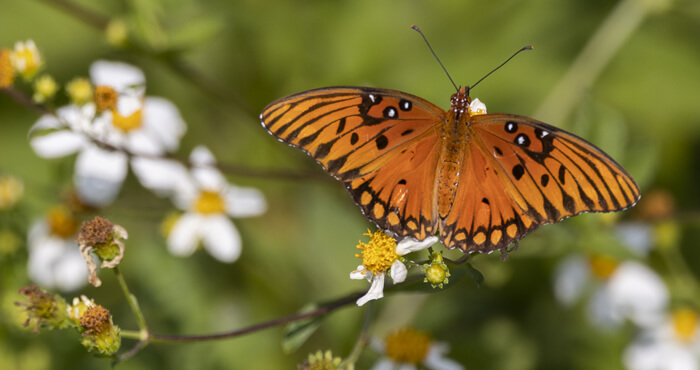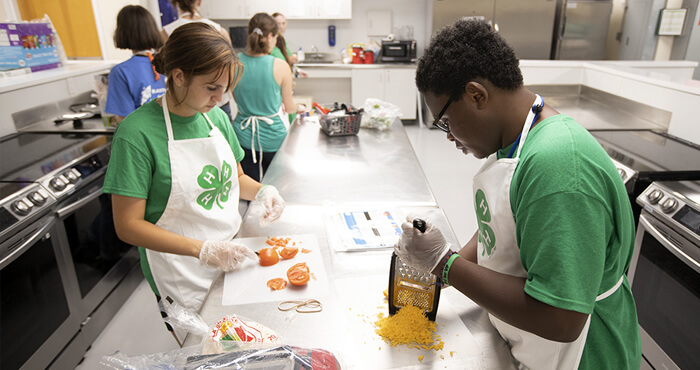
Colony Collapse Disorder
Why Are Honey Bees Disappearing?
Through the years, U.S. beekeepers have faced obstacles to healthy bee management. Now, colony collapse disorder (CCD) threatens honey bees.
What Is Colony Collapse Disorder?
Since 2006, beekeepers have reported higher-than-normal colony losses, which are called colony collapse disorder.
Bee colonies affected by CCD can appear healthy, but then the adult bees disappear from the colonies.
Collapsed Colonies
- Contain no adult bees, with few to no dead bees around the colony
- Contain capped brood
- Contain food stores that are not taken by neighboring bees or colony pests
Collapsing Colonies
- Do not have enough bees to maintain colony brood
- Have a workforce that consists of younger adult bees
- Contain a queen
- Are reluctant to eat food provided by the beekeeper
What Causes CCD?
In past decades, colonies have died in connection with symptoms similar to those of CCD. These historic occurrences may not share a common cause with modern-day CCD, but they do share its symptoms.
The cause of CCD has not been determined, and every realistic cause remains a possibility. The following list of causes, which is not in a particular order, is not comprehensive—it may change based on new research.
For more detailed information about each possible cause, see the original publication, "Colony Collapse Disorder (CCD) in Honey Bees."
- Traditional bee pests and diseases.
While these are most likely not responsible for CCD— because they do not produce the symptoms—they may intensify the problem. - Bee management.
Hive management varies among beekeepers, but poor management can make any colony problem worse. - Queen source.
Queens affect genetic diversity and bee lineage. Across the nation, only a few breeder queens are used to produce queen bees (and therefore, all U.S. honey bees), which leads to poor genetic diversity. - Chemical use in bee colonies.
Chemicals used to treat bee diseases and pests have been found to have sub-lethal effects—even when used according to the label and management recommendations. - Chemical toxins in the environment.
Bees can be exposed to toxins while foraging, drinking contaminated water, or by inhaling them directly. - Varroa mites and associated pathogens.
Varroa mites remain the world's most destructive honey bee killer. The mites, the viruses they transmit, and the chemical treatment they require are considered possible causes of CCD. - Nutrition.
Malnutrition causes stress to bees, possibly weakening their immune systems. - Undiscovered or new pests and diseases.Unidentified or recently introduced pests and pathogens are considered possible causes of CCD.
Many scientists believe that CCD is caused by a combination of the above factors. This combination effect makes CCD more difficult to study.
What Does CCD Mean for Us?
Most people recognize the importance of honey bees and associate them with honey production. However, honey production is of minor importance compared to bees' role in pollination.
Effects on Industry & Consumers
Beekeepers who keep bees for pollination load their colonies on trucks and move them around the country to pollinate crops.
Growers pay beekeepers to bring honey bees to their fields to ensure adequate pollination of their crops. In return, the growers benefit through higher crop production per acre, larger size and better product shape, and even enhanced product taste.
US agriculture depends on honey bee pollination. No one expects bees to disappear altogether, but if bees continue to die at the current rates, we may experience increased food prices and decreased food availability.
Signs of Environmental Problems
Honey bees are biological indicators, meaning that honey bee health reflects the general health of the environment. Bee losses are possibly a symptom of a much greater environmental problem.
Searching for Solutions
Beekeepers, governmental officials, and scientists from universities, industries, and the USDA have initiated a number of investigations into the possible causes of CCD.
It is safe to assume that most potential causes of CCD are being investigated. Many granting agencies have realized the importance of honey bees and have distributed research funds in an effort to find the cause and a cure.
What Can Beekeepers Do?
Although the causes of colony collapse disorder are not yet known, the following recommendations may provide beekeepers with some options:
- Do not combine collapsing colonies with healthy ones.
- If you find abandoned hive equipment, and the cause of bee death is suspicious, store the equipment so other bees cannot live in it. Do not reuse this equipment.
- Use an integrated pest management (IPM) approach for varroa control in honey bee colonies. This will minimize bee exposure to potentially toxic chemicals.
- Keep colonies strong by practicing best management practices.
Contact your local Extension agent for more information about CCD, honey bees, or beekeeping in general.
Adapted and excerpted from:
J. Ellis, "Colony Collapse Disorder (CCD) in Honey Bees" (ENY-150), UF/IFAS Entomology and Nematology Department (reviewed 12/2016).
RESOURCES
UF/IFAS Publications
- Agribusiness
- Agricultural Safety
- Agronomy
- Crops
- Florida Forage Handbook
- Fruits and Vegetables
- Livestock and Poultry
- Nurseries and Greenhouses
- Soil and Water
- Sustainable Agriculture
- Weed Management in Field Crops and Pasture Grasses (WMG)
State & Federal Agencies
- Florida Department of Agriculture and Consumer Services (FDACS)
- Fish and Wildlife Research Institute--Florida Fish and Wildlife Conservation Commission
- Florida Department of Environmental Protection
- South Florida Information Access (SOFIA)—U.S. Geological Survey
- U.S. Department of Agriculture (USDA)
- U.S. Forest Service--USDA
- U.S. Environmental Protection Agency (EPA)
- U.S. Fish & Wildlife Service
- U.S. Geological Survey (USGS)





.jpg)

.jpg)